Komentáře / Otázky (48)
![]() Beáta Birta napsala:
Beáta Birta napsala:
Nagyon szép ez a minta. Nincs esetleg minta rajz a bikini alsó hoz?
23.06.2024 - 12:07Odpověď DROPS Design :
Kedves Beáta, örülünk, hogy tetszik a minta. Az alsóhoz is csak a leírás van, rajz nincsen. Sikeres kézimunkázást!
23.06.2024 - 15:20
![]() Dybas napsala:
Dybas napsala:
Hi, I have followed the pattern, but after doing it the fans at cups are not quite aligning with the body and they don't cover sides of the breasts properly. Do you have any idea how it could be fixed?
30.08.2023 - 20:29Odpověď DROPS Design :
Dear Mrs Dybas, you can continue working treble crochets (UK-English)/double crochets (US-English) until you reach the required measurements and then finish with fan pattern M.2, making sure your number of stitches is divisible by 4 + 1. Happy crocheting!
31.08.2023 - 09:04
![]() Fianna Joy napsala:
Fianna Joy napsala:
Jeg har et spørgsmål om udtagningen på bagstykket på bikinitusserne. (laver en størelse s) Jeg forstår ikke hvordan man skal lave "Tag 1 fm ud i hver side på hver række totalt 0 gange, på hver 2.række totalt 26 gange, på hver 4.række 1 gange = 75 fm." hvordan skal jeg hækle det? Mvh Fianna
19.01.2022 - 13:56Odpověď DROPS Design :
Hei Fianna. Du hekler str. S og da skal det ikke tas ut på hver rad, slik det skal i str. M-L-XL (4-4-6 ganger). Du skal ta ut i hver side på hver 2.rad totalt 26 ganger og på hver 4.rad 1 gang = 75 fastmasker. Det økes 1 maske i hver side på en rad slik: hekle 2 masker i første maske. Hekle 1 maske i hver maske til det gjenstår 1 maske, hekle 2 masker i siste maske. mvh DROPS Design
25.01.2022 - 10:36
![]() Maja napsala:
Maja napsala:
Når der står: "Hækl næste række således: * hækl 1 fm i hver fm rækken ud, men i m med mærketråd (= den midterste m) hækles der 3 fm *. Gentag fra *-* " Skal man så vende arbejde ligesom man gjorde lige før man starter på dette, eller hækler man bare rundt? Jeg har bare hæklet rundt, men får ligesom sådan en bule ud i den ende hvor man ikke hækler ekstra masker ved mærketråden. Og tænker ikke det bliver så pænt når man har den på.
28.01.2021 - 23:38Odpověď DROPS Design :
Hei Maja. Du skal hekle frem og tilbake, ikke rundt. Det økes kun på den ene siden. mvh DROPS design
01.02.2021 - 13:07
![]() Karen Monge napsala:
Karen Monge napsala:
Según entendí, en talla S, después de las 5 vueltas de P.A 10 filas de P.B con disminución al inicio y al final=31P.B Pero luego dice que haga 6 filas con disminuciones al inicio y al final ¿Entonces en total son 16 filas iguales?
01.04.2019 - 08:10Odpověď DROPS Design :
Hola Karen. Si, en realidad hay 16 filas con disminuciones, pero las primeras 10 disminuciones trabajamos cada 2ª fila/vuelta ( mira el patrón) y las siguientes 6 disminuciones trabajamos CADA fila/vuelta.
02.04.2019 - 14:50
![]() JUDY GATES napsala:
JUDY GATES napsala:
This is a question about the bikini bottom...When the instructions say dec 1 sc each side, is that really 1 sc dec at the begining of each row? so you are really dec-ing 1 sc per row? It would also help if there were a diagram of the bikini bottom with measurements . Also I would like to know how many sc's in the with of the crotch area and how long is that strip? Thank you Judy
30.07.2018 - 00:13Odpověď DROPS Design :
Dear Mrs Gates, when decreasing 1 sc on each side you dec 2 sc per row - see how to decrease under DECREASE ON SC ROW. You first decrease every othere row then every row, after last dec you should have 19-21-21-25-27 sc. Happy crocheting!
31.07.2018 - 09:30Saretha Sandham napsala:
I haven't crocheted with a pattern in a long time and now I am trying to make this bikini for my daughter. I don't understand the instructions for decreasing on dc row. What does YO mean? Do I decrease the same as in the tutorial video or is it different for this pattern?
20.04.2018 - 07:31Odpověď DROPS Design :
Dear Mrs Sandham, YO means yarn over - decrease as explained in text ie as shown in videobelow. Happy crocheting!
20.04.2018 - 09:00Alicia napsala:
Is the back of the bikini bottom meant to be skimpier than the front or have I done something wrong?
31.03.2017 - 09:55Odpověď DROPS Design :
Dear Alicia, the front will be smaller than the back, as for any bikini bottom. Happy crocheting!
31.03.2017 - 13:32
![]() Marlene Foulk napsala:
Marlene Foulk napsala:
How many inches will a size S-M-L-XL be for each cup on top?
09.03.2016 - 15:18Odpověď DROPS Design :
Dear Mrs Foulk, you can get the width of the cup for each size checking the number of rows worked and calculating with the tension ie 26 sc x 28 rows (24 dc x 13 rows) = 10 x 10 cm / 4'' x 4''. Happy crocheting!
09.03.2016 - 17:43KAMI napsala:
Hi, I made the top according to the instructions. I made both cups but am unable to complete the top of the bikini. The instructions given ended up having the top increase into a triangle but the fan pattern is only at the top. What is the trick to this?
04.09.2015 - 00:36Odpověď DROPS Design :
Dear Kami, fan border is worked along both sides of triangle. When working when working 2nd row, work 5tr, 1 ch 5 tr in dc with marker (and continue row to the end), and when working 3rd row of fan pattern work 5 tr in the top ch of previous row (= in the tip, mid on top of cup), and finish row. Happy crocheting!
04.09.2015 - 09:44
Sunny Season#sunnyseasonbikini |
||||||||||||||||||||||
 |
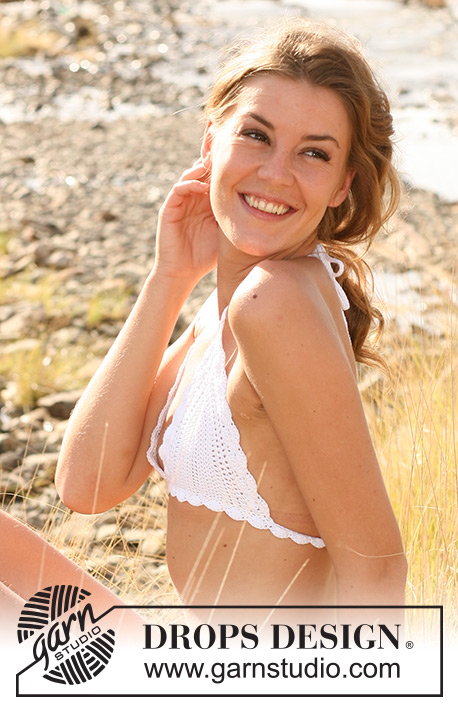 |
|||||||||||||||||||||
DROPS háčkované bikiny s krajkovým lemem z příze „Safran“. Velikost XS – XL.
DROPS 128-26 |
||||||||||||||||||||||
|
TIP NA HÁČKOVÁNÍ: ŘADA KS: Každou řadu začínáme 1.řo, následně háčkujeme KS do každého oka. POZN! Při přidávání v řadě z KS, uháčkujeme na začátku řady 2 řo (místo 1 řo). UJÍMÁNÍ V ŘADĚ KS: Ujímáme na každé straně řady: 1 KD, * háček vpíchneme do dalšího oka, nabereme přízi*, mezi *-* opakujeme, přízi nahodíme na háček a protáhneme všemi 3 smyčkami na háčku. Dále háčkujeme do každého oka 1 KS až v řadě zbývají 3 oka, opakujeme ujímání, do posledního oka háčkujeme KS. ŘADA DS: Každou řadu začínáme 3 řo, následně háčkujeme do každého oka DS. UJÍMÁNÍ V ŘADĚ DS: Ujímáme na každé straně řady: 1 DS, * nahodíme, háček vpíchneme do následujícího oka, nabereme přízi, nahodíme a protáhneme přízi skrz dvě smyčky na háčku*, mezi *-* opakujeme, nahodíme a přízi protáhneme skrz 3 smyčky na háčku. Dále háčkujeme do každého oka 1 DS až v řadě zbývají 3 oka, opakujeme ujímání, do posledního oka háčkujeme DS. PŘIDÁVÁNÍ: Přidáváme z každé strany řady: Do prvního oka háčkujeme 2 oka. Do každého oka háčkujeme 1 oko, až v řadě zbývá 1 oko, do posledního oka háčkujeme 2 oka. KRAJKOVÝ VZOR 1: Viz schéma M. 1 (počet oka je dělitelný 6 + 1). 1. řada: 1 řo, do prvního oka v řadě háčkujeme 1 KS, * vynechat 2 oka, 5 DS do následujícího oka, vynechat 1 oka, do následujícího oka háčkujeme 1 KS*, mezi *-* opakujeme. Řadu končíme KS do posledního oka. Práci otočíme. 2. řada: 3 řo, do prvního KS v řadě háčkujeme 2 DS, *KS do středu 5 DS z minulé řady, vynechat 2 oka, do následujícího oka KS*, mezi *-* opakujeme. Řadu končíme KS do středu 5 DS z minulé řady, 3 DS do posledního KS v řadě, práci otočíme. 3. řada: řo, do prvního DS v řadě háčkujeme KS, * 5 DS do následujícího KS, KS do středu 5 DS z minulé řady*, mezi *-* opakujeme. Řadu končíme KS do třetího řo ze začátku předchozí řady. KRAJKOVÝ VZOR 2: Viz schéma M. 2 (počet ok je dělitelný 4 + 1). 1. řada: řo, do prvního oka v řadě háčkujeme KS, * vy, vynechat 1 oko, 5 DS do následujícího oka, vynechat 1 oko, do následujícího oka háčkujeme KS*, mezi *-* opakujeme, řadu končíme KS do posledního oka, práci otočíme. 2. -3. řada: háčkujeme stejně jako řadu 2. a 3. KRAJOVÉHO VZORU 1. ---------------------------------------------------------------------- BIKINY KALHOTKY: Začínáme na předním díle a spolu se zadním dílem háčkujeme jako jeden kus. Začneme háčkem č. 3 přízí Safran na 55-61-67-73-79 řo + 3 řo na otočení. První řadu háčkujeme: do 4.řo od háčku háčkujeme 1 DS, dále do každého řo v řadě háčkujeme vždy 1 KS = 55-61-67-73-79 DS (počet ok je dělitelný 6 + 1), práci otočíme – viz ŘADA DS. Pokračujeme: * v následující řadě ujmeme z každé strany 1 DS – viz UJÍMÁNÍ V ŘADĚ DS, háčkujeme jednu řadu DS*, mezi *-* opakujeme ještě jednou = 51-57-63-69-75 DS (5 řad z DS). Pokračujeme KS – viz ŘADA DS – SOUČASNĚ ujmeme v první řadě z každé strany 1 KS – viz UJÍMÁNÍ V ŘADĚ KS. Ujímání opakujeme v každé druhé řadě z každé strany celkem 10-10-9-10-12 krát = 31-37-45-49-51 KS. PAMATUJTE NA SPRÁVNÉ NAPĚTÍ PŘÍZE! V každé druhé řadě pak ujmeme z každé strany 1 KS celkem 6-8-12-12-12 krát = 19-21-21-25-27 KS. Pokračujeme v háčkování KS. Ve výšce 19-21-23-24-26 cm, začátek zadního dílu a další měření provádíme od tohoto místa. Začínáme z každé strany přidávat – viz PŘIDÁVÁNÍ. Přidávání opakujeme: V každé řadě přidáme z každé strany 1 KS celkem 0-0-4-4-6 krát, v každé druhé řadě ještě 22-26-26-27-27 krát a v každé 4. řadě 3-1-0-0-0 krát = 69-75-81-87-93 KS. Nyní háčkujeme DS až do požadované výšky. V následující řadě háčkujeme: * na každé straně přidáme 1 DS, uháčkujeme jednu řadu DS*, mezi *-* opakujeme ještě 1 krát = 73-79-85-91-97 DS (počet je dělitelný 6 + 1). DS háčkujeme, až díl měří 24-24-24-25-26 cm, přízi neodstřiháváme! KRAJKOVÝ LEM A ŠŇŮRKY: Háčkujeme řadu 1 – 3 KRAJKOVÝM VZOREM 1 – viz popis výše. Zopakujeme 2. řadu: 0-0-0-1-1 krát, přízi neodstřihujeme. Dále háčkujeme řetízek z řo o délce asi 28-29-30-32-34 cm. Práci otočíme, do každého řo háčkujeme pevné oko, přízi ustřihneme, zapošijeme. Druhou šňůrku uháčkujeme stejně a přišijeme do druhého rohu krajkového lemu. Krajkový lem uháčkujeme i na předním díle. BIKINY PODPRSENKA: Háčkem č. 3 přízí Safran uháčkujeme 23-25-28-31-32 řo. Háčkujeme lícové a rubové řady. První řadu háčkujeme: do druhého řo od háčku háčkujeme 1 KS, do každého řo pak háčkujeme KS, do posledního řo háčkujeme 3 KS, do každého řo z druhé strany háčkujeme KS = 45-49-55-61-63 KS v řadě. Značku umístíme do středu KS (=22-24-27-30-31 KS z každé strany značky). Práci otočíme. Následující řadu háčkujeme: * do každého KS háčkujeme KS, do označeného KS háčkujeme 3 KS (= středové oko)*, mezi *-* opakujeme, až máme 6-7-9-11-14 řad = 55-61-71-81-89 KS v řadě (=27-30-35-40-44 KS na každou stranu od značky). Následují 3 řady DS: * 1 DS do každého oka v řadě, do označeného oka háčkujeme 3 DS (=středové oko)*, mezi *-* opakujeme ještě 2krát, v poslední řadě háčkujeme do označeného oka 5 DS (namísto 3 DS) – SOUČASNĚ rovnoměrně v řadě přidáme 2-4-2-0-0 ok = 65-73-81-89-97 DS (počet ok je dělitelný 4 + 1). Následuje první řada KRAJKOVÉHO VZORU 2 – viz popis výše, značku umístíme do středního KS (střed – vrchol košíčku). Dále háčkujeme druhou řadu vzorem M. 2, 5 DS, 1 řo, 5DS do označeného KS (namísto 5 DS). Dále uháčkujeme třetí řadu krajkového vzoru (= lícová řada), do řo z předchozí řady háčkujeme 5 DS. Přízi ustřihneme a zapošijeme. Druhý košíček uháčkujeme stejně. KRAJKOVÝ LEM A ŠŇŮRKY PO STRANÁCH: Háčkujeme háčkem č. 3 přízí Safran uháčkujeme řetízek z řo asi 37-38-39-41-43 cm (= pravá šňůrka). Pokračujeme 34-36-38-44-50 KS podél spodní části košíčku (háčkujeme z lícové strany). Pokračujeme 2 cm z řo, 34-36-38-44-50 KS podél spodní části druhého košíčku (z lícové strany). Dále uháčkujeme asi 37-38-39-41-43 cm řetízkovými oky (levá šňůrka). Práci otočíme. Další řadu háčkujeme pouze KS. Díl otočíme. V následující řadě (=poslední řada) háčkujeme v délce asi 17-18-19-21-23 cm do každého KS pevné oko, dále háčkujeme první řadu vzoru M. 2 (začínáme 1 KS) až zbývá asi 17-18-19-21-23 cm, háčkujeme do zbývajících KS pevná oka. Přízi ustřihneme a zapošijeme. RAMÍNKO OKOLO KRKU: Háčkem č. 3 přízí Safran uháčkujeme řetízek z řetízkových ok v délce asi 48-49-50-52-54 cm. Práci otočíme, do každého řo háčkujeme pevné oko, následuje pevné oko mezi 5 DS ve vrcholu košíčku. Práci otočíme, do stejného oka uháčkujeme pevné oko, a dále následují pevná oka z druhé strany řetízku. Přízi ustřihneme, zapošijeme. Druhé ramínko uháčkujeme stejně. |
||||||||||||||||||||||
Vysvětlivky ke schématu |
||||||||||||||||||||||
|
||||||||||||||||||||||
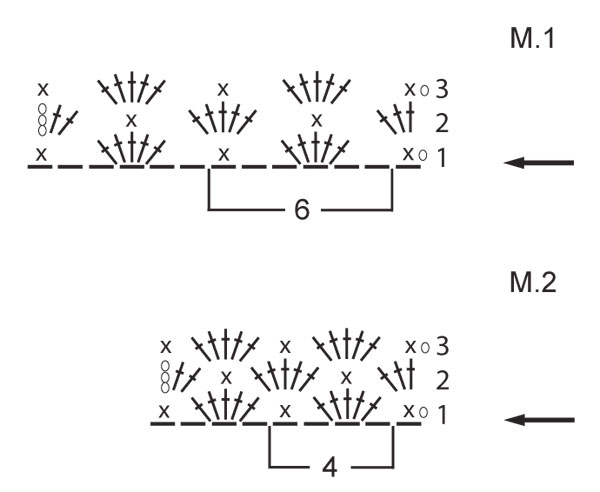
|
||||||||||||||||||||||
Dokončili jste tento model?Pak označte své fotky tagem #dropspattern #sunnyseasonbikini nebo je pošlete do galerie #dropsfan. Potřebujete s tímto návodem poradit?Otevřete-li si návod na stránce garnstudio.com, najdete tam 8 výukových video-ukázek, Komentáře/Dotazy a další užitečné informace. © 1982-2025 DROPS Design A/S. Vyhrazujeme si veškerá práva. Tento dokument, včetně všech jeho dílčích částí, podléhá autorským právům. Podrobnější komentář k možnostem užití našich návodů najdete dole pod každým návodem na našich stránkách. |
||||||||||||||||||||||







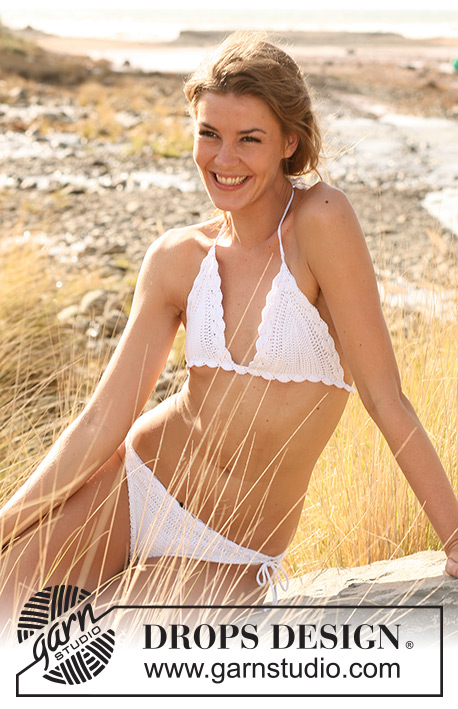

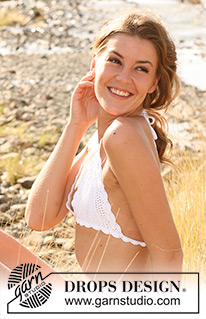


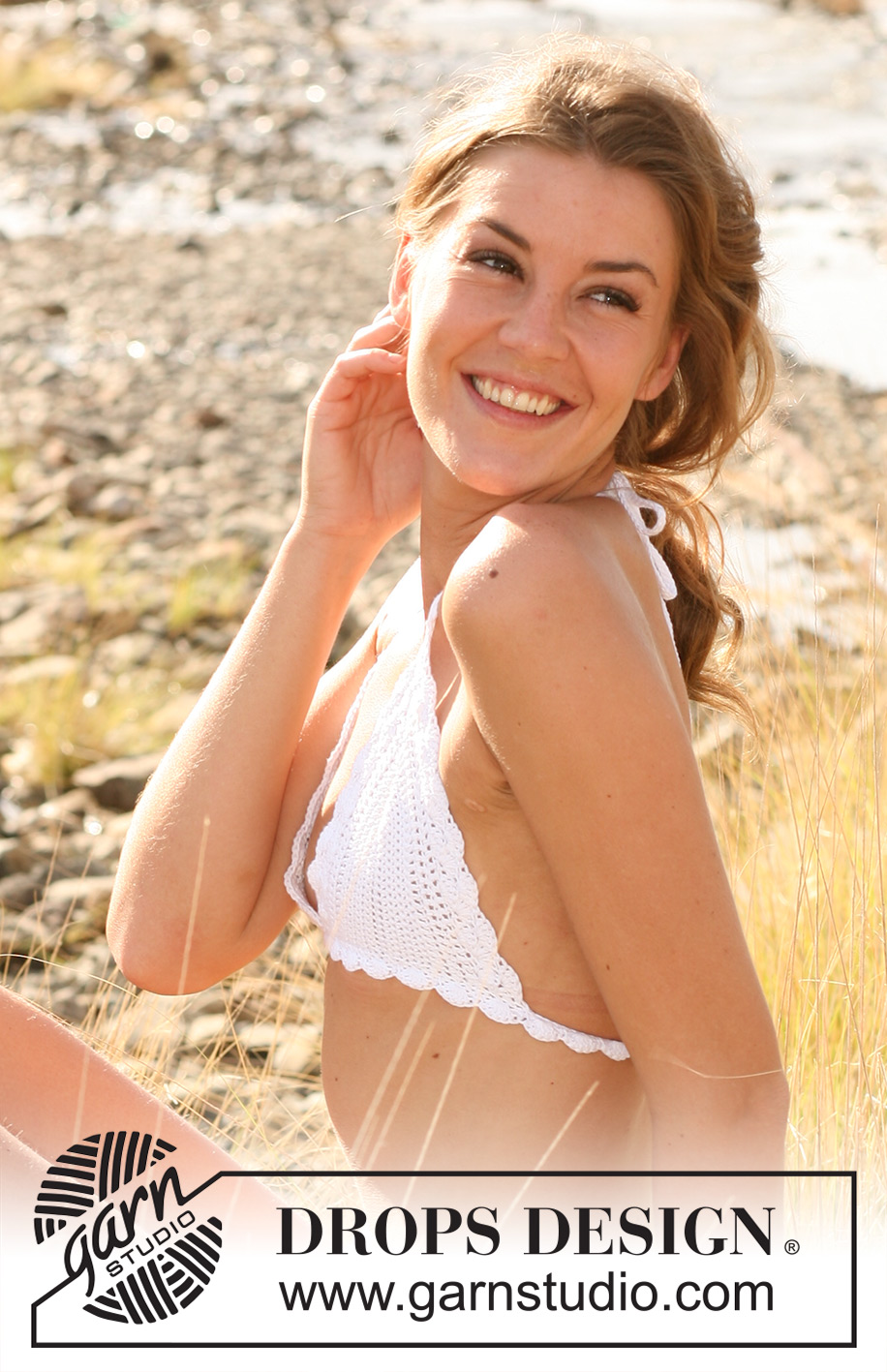



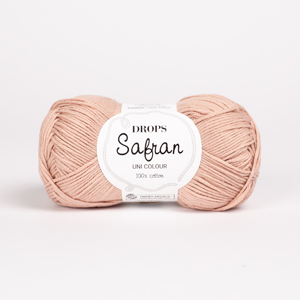
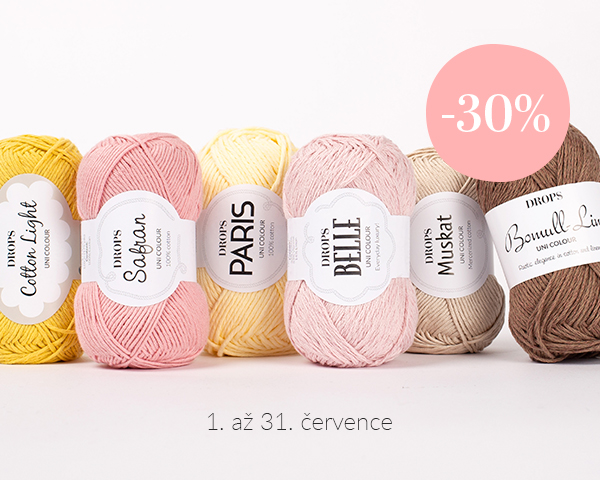
















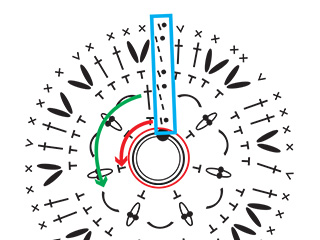





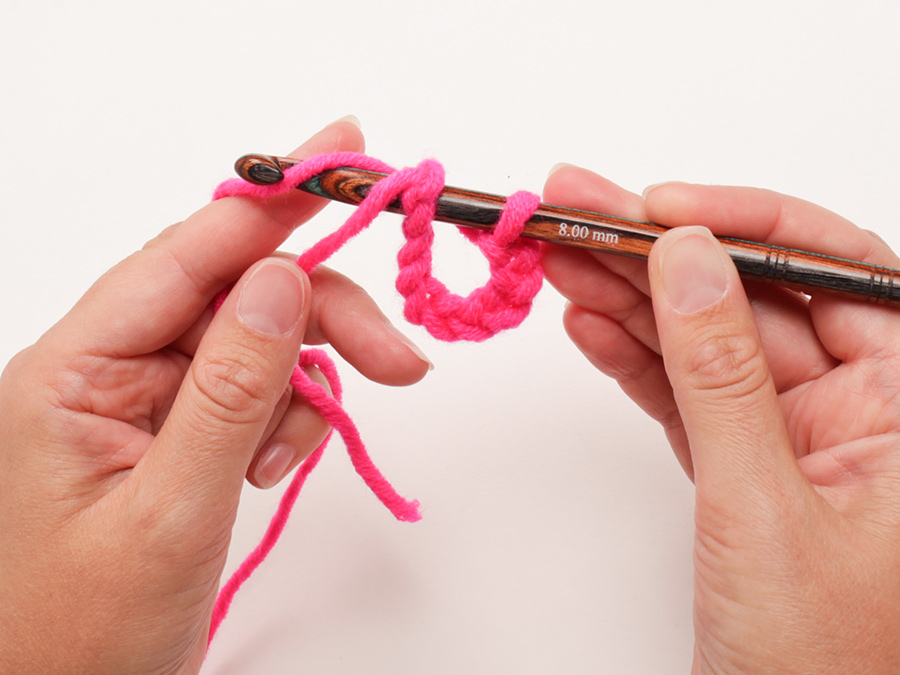



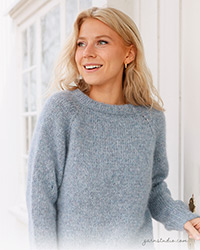
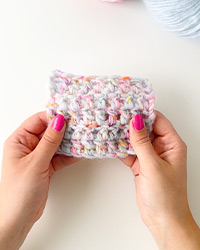
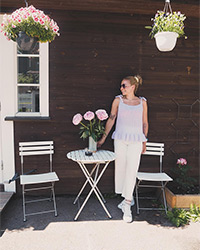
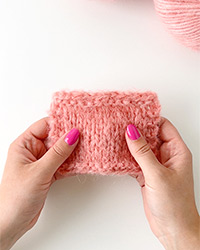
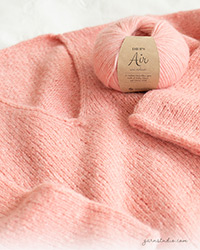
Přidejte komentář k návodu DROPS 128-26
Rádi bychom věděli, co si o tomto modelu myslíte!
Pokud se chcete na něco zeptat, dbejte prosím na to, abyste ve formuláři níže vybrali správnou kategorii - díky tomu se dříve dozvíte, co potřebujete vědět. Povinná pole jsou označena *.